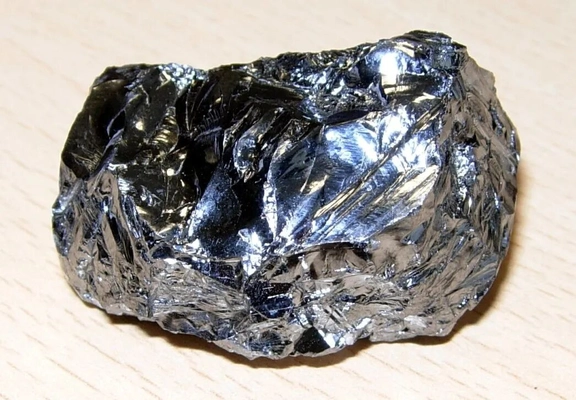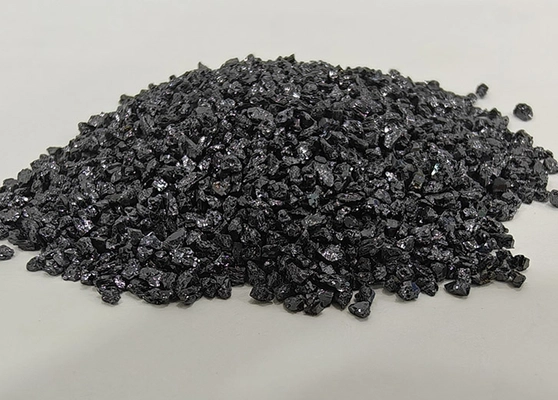Quick Answer: Silicon (Si) is a metalloid — an element that exhibits both metallic and nonmetallic properties. It has a shiny gray surface like a metal but is brittle and forms covalent bonds like a nonmetal. This dual nature makes silicon vital for semiconductors, solar panels, and advanced ceramics such as silicon carbide (SiC).
Table of Contents
- 1. What Is Silicon?
- 2. Silicon’s Position in the Periodic Table
- 3. Main Properties of Silicon
- 4. Metal vs Nonmetal vs Metalloid: Where Silicon Fits
- 5. Why Is Silicon Classified as a Metalloid?
- 6. Industrial Importance of Silicon
- 7. FAQ
1. What Is Silicon?

Silicon (Si) is the 14th element in the periodic table and one of the most abundant substances in Earth’s crust. People often ask questions like “is silicon a metalloid?” or “is silicon a metal or nonmetal?” because it displays characteristics from both sides. Scientifically, silicon is recognized as a metalloid — a transitional element with mixed behavior.
2. Silicon’s Position in the Periodic Table
Silicon belongs to Group 14 (IVA), between aluminum (a metal) and phosphorus (a nonmetal). This intermediate position directly explains why silicon shows a combination of metallic luster and nonmetallic bonding — it bridges the gap between the two families.
3. Main Properties of Silicon
- Appearance: Gray and shiny, crystalline solid
- Electrical Behavior: Semiconductor — conductivity increases with temperature or doping
- Chemical Bonding: Mainly covalent, forming Si–O and Si–C bonds
- Mechanical: Hard but brittle
- Melting Point: 1414 °C
4. Metal vs Nonmetal vs Metalloid: Where Silicon Fits
To understand its classification, let’s compare silicon’s characteristics with metals and nonmetals:
| Characteristic | Metal | Nonmetal | Silicon (Metalloid) |
|---|---|---|---|
| Conductivity | High | Low | Moderate (semiconductor) |
| Luster | Bright, metallic | Dull | Shiny gray |
| Ductility | Good | Poor | Poor (brittle) |
| Bonding Type | Metallic | Covalent | Mainly covalent |
5. Why Is Silicon Classified as a Metalloid?
Silicon is considered a metalloid because it lies exactly between metals and nonmetals in both physical and chemical behavior. Its atomic structure provides the main reason: each silicon atom has four valence electrons that can either share covalent bonds (nonmetallic behavior) or extend into a crystal lattice (metallic-like structure).
At room temperature, silicon behaves as a semiconductor—it doesn’t conduct electricity freely like metals, but its conductivity increases when heated or doped with other elements. This partial conductivity is the hallmark of metalloids. Meanwhile, its shiny metallic appearance and heat conductivity resemble those of metals, while its brittleness and chemical reactivity resemble nonmetals.
In essence, silicon shows three defining metalloid traits:
- It has metallic luster but is brittle like glass.
- It can conduct electricity under certain conditions (semiconductive).
- It forms covalent compounds such as silicon dioxide (SiO₂) and silicon carbide (SiC).
These combined features explain why silicon is classified as a metalloid rather than a true metal or nonmetal.
6. Industrial Importance of Silicon
Silicon’s unique nature has enabled innovations across multiple industries:
- Electronics: The foundation of the semiconductor industry—microchips, transistors, and diodes are made from crystalline silicon.
- Solar Energy: Silicon’s photovoltaic properties convert sunlight into electricity efficiently.
- Ceramics and Abrasives: In the form of silicon carbide (SiC), it provides extreme hardness, thermal resistance, and corrosion stability.
- Refractory Materials: SiC and alumina-based materials such as Brown Fused Alumina and White Fused Alumina are key in high-temperature furnaces.
- Metallurgy: Used as an alloying element to improve aluminum and steel strength.
7. FAQ
Is silicon a metalloid?
Yes. Silicon is classified as a metalloid because it has both metallic and nonmetallic characteristics, including semiconductivity and covalent bonding.
Why is silicon called a metalloid?
Because silicon exhibits metallic appearance and limited conductivity, yet chemically behaves like a nonmetal. Its mixed nature perfectly fits the metalloid category.
Is silicon a metal or nonmetal?
Neither. Silicon is a metalloid — it’s positioned between metals and nonmetals in the periodic table and combines traits from both.
What makes silicon different from silicon carbide?
Silicon (Si) is a pure element, while silicon carbide (SiC) is a compound of silicon and carbon used in abrasives, refractories, and semiconductors.
